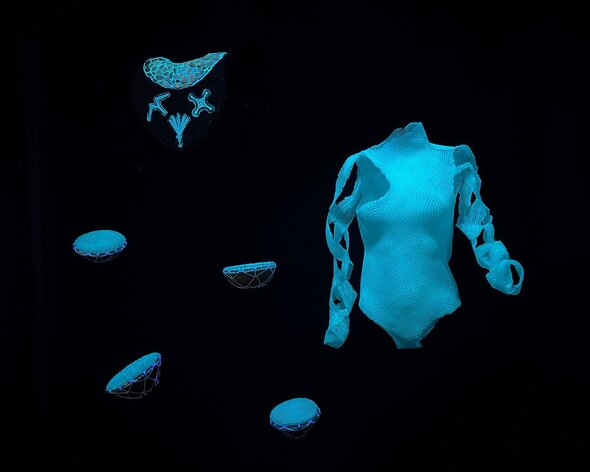Hey fashion, it’s time for a new look!
AI is the buzzword of the moment right now, inspiring spirited debates across the creative industries about what it can do, what it should do, and what it will do in the future. Perhaps you’ve seen that post circulating socials about wanting AI to do your dishes and laundry not your writing and art? Or maybe you’ve heard that being polite to Siri and Alexa will grant you their favour when AI inevitably becomes sentient and “takes over”. Whether you’re an AI-sceptic, ChatGPT enthusiast or cautious but curious; for better or worse, AI is here to stay. With new uses of AI for the fashion industry being discovered daily, these technologies have the power to shape the future of fashion.
To better understand what this future might look like, we headed to the AI In Fashion Symposium, hosted by University of the Arts London’s prestigious London College of Fashion. As an industry, known for its innovation but notoriously fond of sticking to traditional ways of working, education is the key to closing the knowledge gap required to master these modern technologies. Nurturing the fashion leaders of the future for over a century, who better to learn from than the educators and industry leaders at the forefront of these boundary-pushing new developments.
Located on their new East Bank campus on Queen Elizabeth Olympic Park, a cultural hub for innovation and creativity, the space was abuzz with optimism and opportunity. Students, industry experts and academics alike gathered in the sprawling lecture hall, keen to engage in deep knowledge exchange and examine the narratives that exist regarding artificial intelligence and its future in fashion.
Published: 17th June 2024
Words: Lydia Oyeniran
IBM Fashion Trust Consortium
Following Bassinder, Grainne Lynch discusses the IBM Fashion Trust, a consortium-based project that involved researchers, IBM as tech partner and various fashion brands. The initiative explored how fashion could evolve into an ecosystem-based industry, experimenting with blockchain technology to promote collaboration and transparency. Investigating cotton as a commodity, various supply chains were compared, revealing the discrepancies and false claims that most in the room openly acknowledged are unfortunately commonplace within the industry. Lynch offered a necessary critique of the current system of supply chain networks, designed to obfuscate responsibility with accountability for brands diminishing beyond Tier 1. However, recent legislative changes, are set to challenge this once and for all, requiring fashion businesses to truly interrogate the integrity of the information they receive from suppliers rather than accepting claims at face value.
AI-powered fashion design
One innovative tool aptly positioned to disrupt the design space is Style 3D, an AI-powered design simulator enabling photo-realistic visualisation of 3D garments from a simple fashion sketch or technical drawing. Offering the ability to experiment with 100s of fabric swatch options, colourways, print scales, and placements without the need for physical samples was promising from a waste reduction perspective. However, the use of Style 3D’s pre-existing design asset library and AI models to generate campaign imagery was met with concern, particularly with regards to intellectual property, ownership of design, credit for use of likeness, and more. The question of who owns the design proves to be a sticky subject at this time with Boby Wong, Senior Tech Consultant at Style 3D humble in acknowledging the grey areas that currently exist within the space. As an industry where innovation moves fast with legislation often slow to catch up, this is a topic that is likely to be debated for the foreseeable future.
“Kick the bloody doors in, destroy, redesign, create something new”
The final talk was an animated and gutsy summary of the day from IBM’s Jez Bassinder and Mary Wallace with a vibe check of the room revealing scepticism replaced with hope and a newfound sense of possibility. With one final speech to spur us on our way, they reflected on the punk movement and its power to disrupt the status quo. We have a chance to do the same with AI, disrupting, innovating, and thinking differently, or as Wallace so impeccably put it: “Kick the bloody doors in, destroy, redesign, create something new.”



